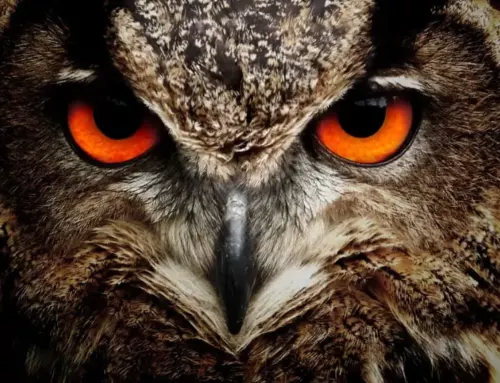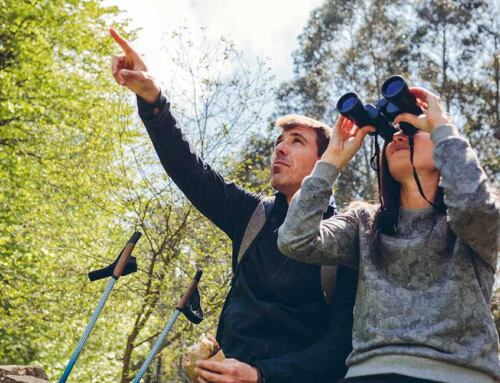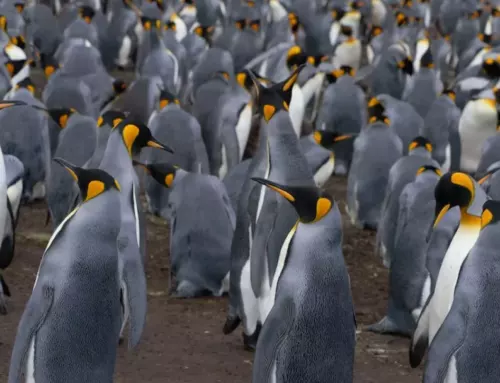The rockhopper penguin is one of the most well-known and popular types of penguin due to its unusual appearance and endearing personality. Birdwatchers and non-enthusiasts alike can’t get enough of the little penguins that inhabit islands in the southern hemisphere. Everything you need to know about rockhopper penguins, from their appearance to their habits and habitat, may be found in this article.
Description & Behavior
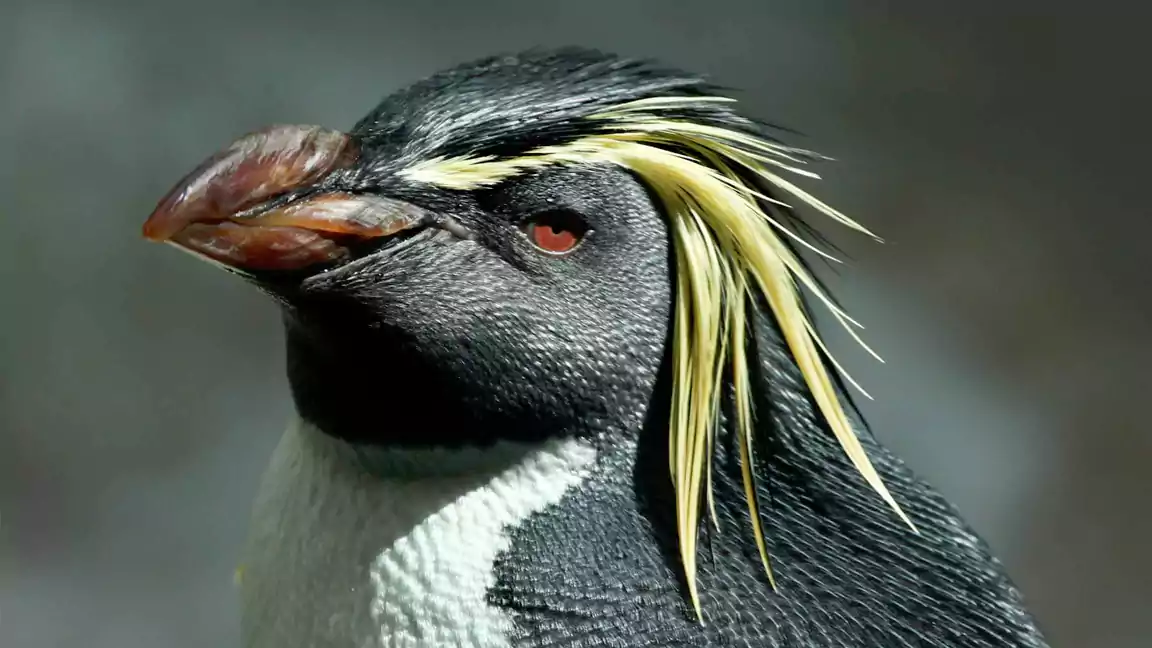
There are three subspecies of the rockhopper penguin, Eudyptes chrysocome (J. R. Forster, 1781): At an average of 52 centimeters in length and 3 kilograms in weight, they are among the tiniest penguins in the world. They have a bright yellow crest on top of their head that begins as a stripe above each eye. They have a black crest on the back of their head, called an occipital crest. They have pink feet and legs in addition to their reddish-orange beaks and eyes. Women tend to be diminutive than men.
Rockhoppers are notorious for their aggressive nature despite their diminutive stature. They are not frightened by people or any kind of animal, no matter how big. When protecting their eggs, rockhoppers will peck at anything that gets too close, including other rockhoppers or the wings of nearby albatrosses. Despite their ferocity when confronted by outsiders, rockhoppers are surprisingly tender when it comes to their companions, engaging in frequent acts of allopreening.
World Range & Habitat
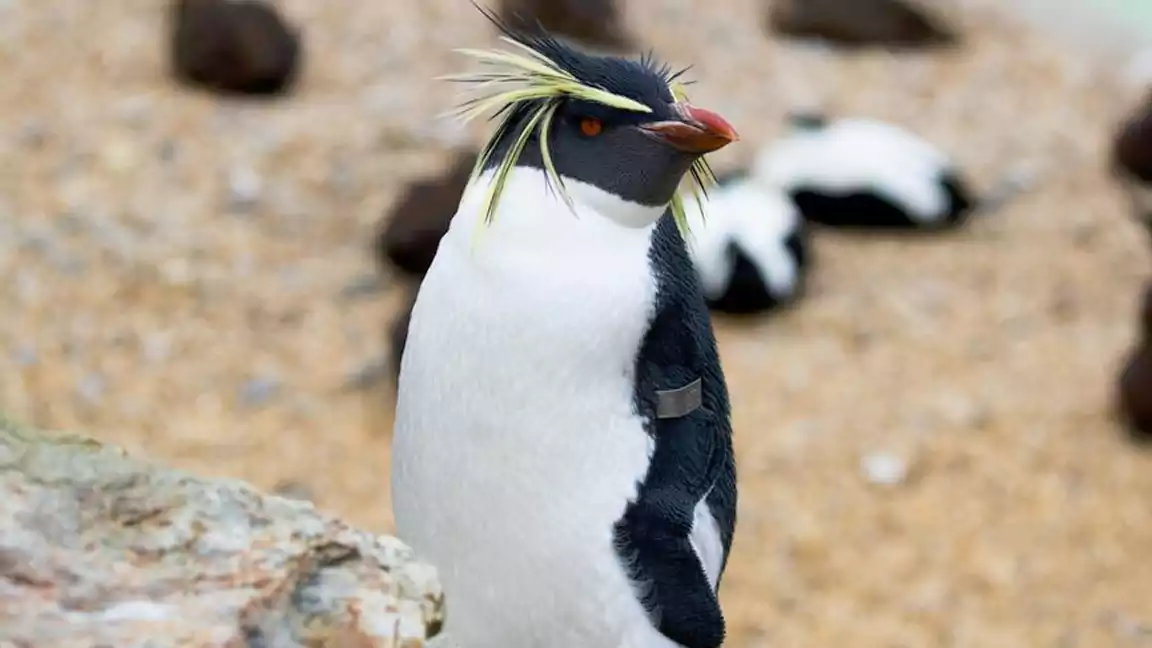
The Falkland Islands, Argentina, and Chile are all part of the southern rockhopper penguin’s range, while the eastern rockhopper penguin can also be found in the islands of Marion, Prince Edward, Crozet, Kerguelen, Heard, MacDonald, Macquarie, Campbell, Antipodes, and Auckland. The northern rockhopper is widely distributed in the areas surrounding Tristan de Cunha, Gough, St. Paul, and the Amsterdam Islands. They like to set up their nests on stony cliff faces that are close to the ocean.
Although grasses and shrubs may obscure the path between the rocky breeding area and the water at older colonies, it is not uncommon to find such a path. Rockhopper penguins are known to bathe and drink from fresh water sources, and hence, their breeding grounds are frequently located near such locations.
Feeding Behavior (Ecology)
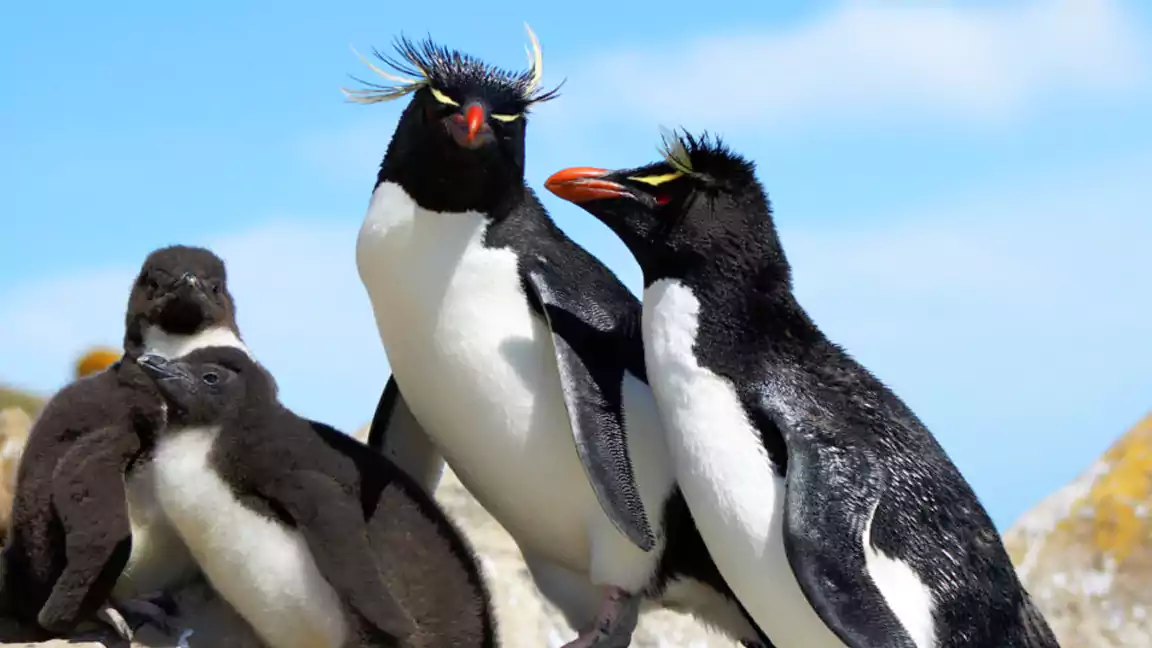
The rockhopper penguin, Eudyptes chrysocome, is an opportunistic feeder that consumes a wide variety of foods. This includes crustaceans like Euphausia lucens and E. vallentini, squid like Gonatus antarcticus and Loligo gahi, and small fish like Teuthowenia sp. Rockhoppers have been recorded diving as deep as 100 meters, but they seem more at home in shallower water. As a rule, they chow down in packs.
Life History
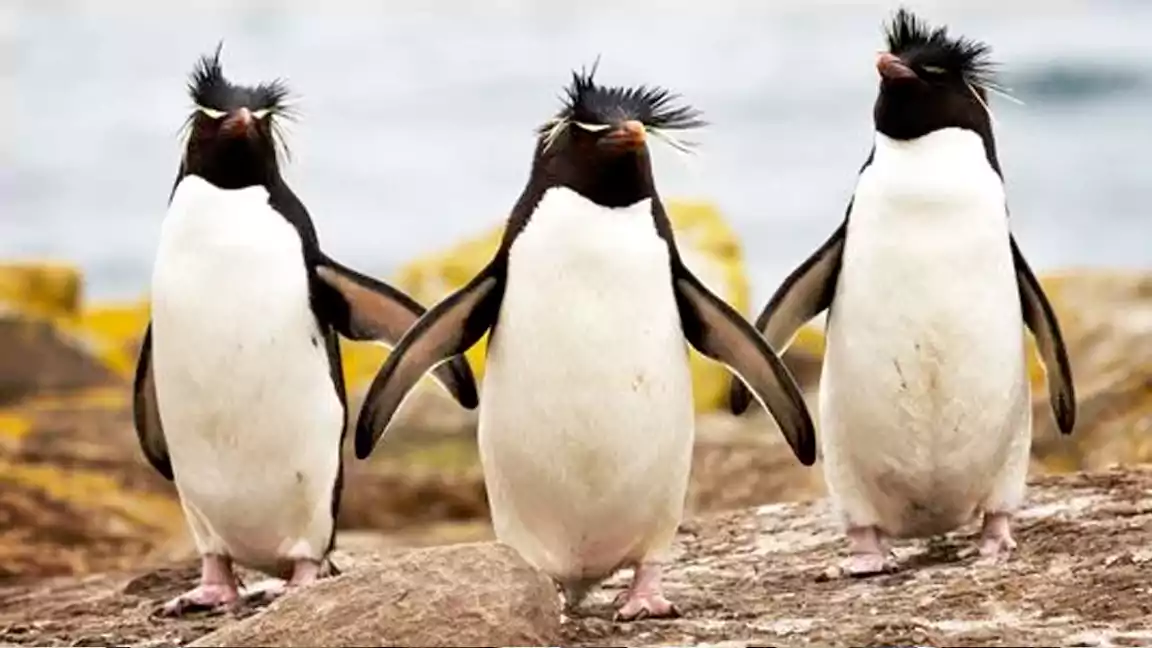
Breeding colonies of the rockhopper penguin, Eudyptes chrysocome, can reach populations of over one hundred thousand (100,000) individuals, with nesting density of 1.5 to 3 nests per square meter. They frequently nest in colonies alongside other birds like albatrosses and cormorants. Rockhoppers typically reuse the same nest from year to year, with only small adjustments made to account for natural wear and tear.
Where do rockhopper penguins live? Rockhopper penguins live on southern Atlantic and Indian Ocean sub-Antarctic islands. They breed in enormous colonies on steep, predator-free rocky shorelines and cliffs. Rockhopper penguins live on the Falkland Islands, South Georgia, Tristan da Cunha, and Amsterdam and St. Paul Islands in the southern Indian Ocean. During non-breeding season, they are occasionally seen on South American and South African coasts.
Beginning in early October, when males show up at the breeding site a few days ahead of females, mating season officially begins. As soon as the females arrive in the early months of November, they begin breeding. The first egg usually hatches first and is smaller than the second (80g vs. 110g). The average time for incubation is 33 days. For the first ten days, both parents take turns seeing to the eggs, but after that, the males go off to find food while the female tends to the nest. When the female exits to forage, the male takes over the third shift and typically stays for the duration of incubation and after to brood the rockhopper penguin baby.
Rockhoppers in the East and North usually take care of only one of the two chicks, but in the South, it’s not uncommon for parents to raise both. Despite this variation, southern rockhoppers are still only able to successfully breed once every year. Young birds don’t have the adult’s distinctive yellow crest or red-brown bill. Sexually immature juveniles join the colony when the chicks begin to molt into adult plumage. These juvenile penguins look similar to newly hatched chicks, but they have the adult rockhoppers’ red-brown bill and a small yellow stripe over their eye. Around the age of four, rockhoppers become sexually mature.
Threats and Conservation
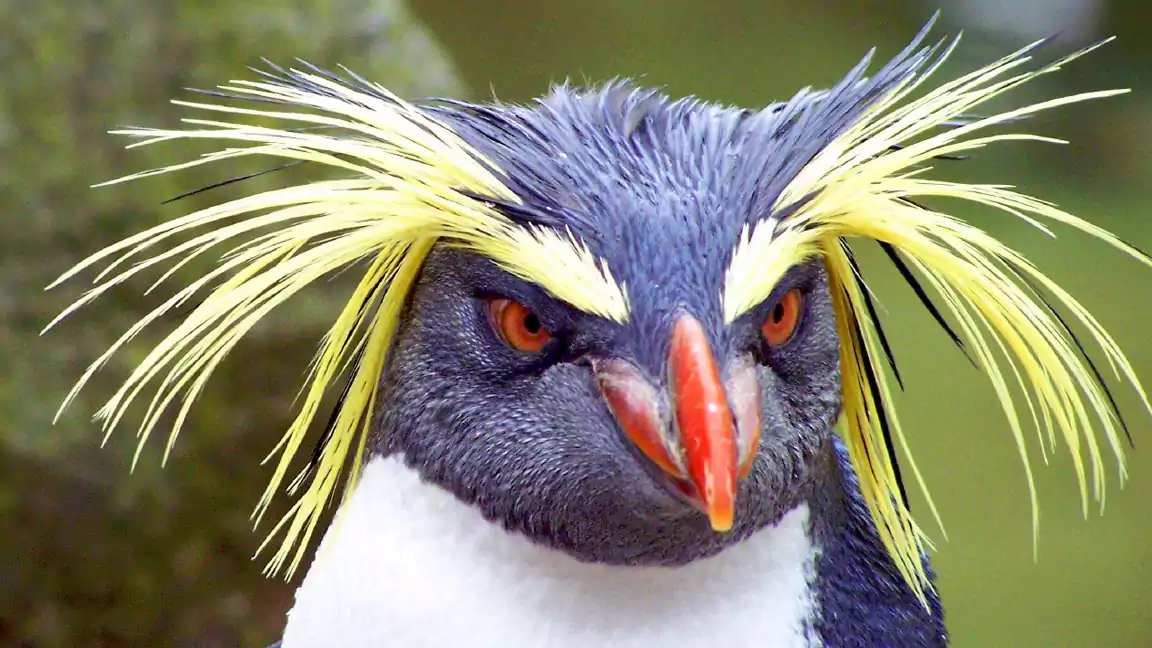
Like other penguin species, rockhopper penguins suffer a number of threats to their survival. Climate change, in the form of rising temperatures and ocean acidity, poses a hazard to the availability of food and nesting sites. Another major problem is the overfishing and pollution that has led to a decline in penguins’ prey and the contamination of their aquatic habitats. Fortunately, there are a number of ongoing conservation efforts that will help ensure the survival of rockhopper penguins and their habitat.
These include initiatives to reduce environmental risks, reign in destructive fishing practices, and protect breeding grounds for penguins. In sum, rockhopper penguins are a fascinating and unique bird species thanks to their unique physical characteristics and sociable demeanor. There are many threats to the survival of these adorable birds, but by maintaining our conservation efforts and promoting public awareness, we can help ensure that they will be there for future generations.
Incredible Rockhopper Penguin Facts
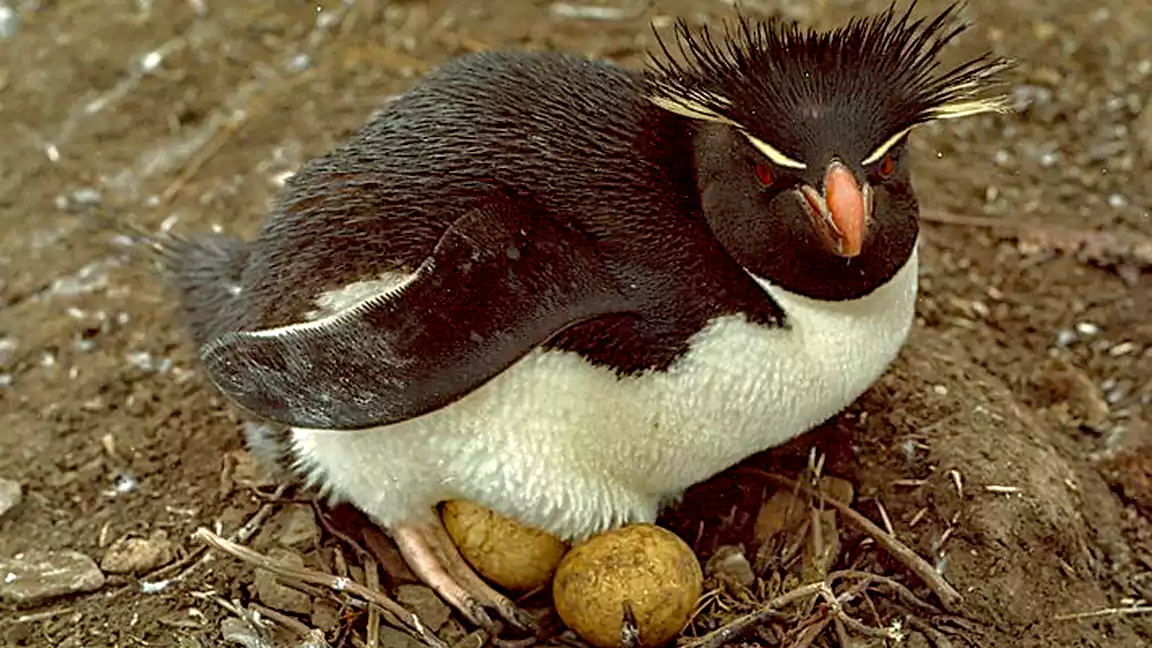
New Zealand, Chile, South Georgia, the Falkland Islands, and Antarctica are all home to rockhopper penguins. There is a lot more to these cute, flightless birds than meets the eye. Did you know, for instance, that there are 18 distinct penguin species? Or that a fully grown male emperor penguin may weigh up to 100 pounds? Look no farther than this list of 10 remarkable facts about the rockhopper penguin if you’re looking for some jaw-dropping information to impress your pals with.
The smallest of the penguins is the rockhopper.
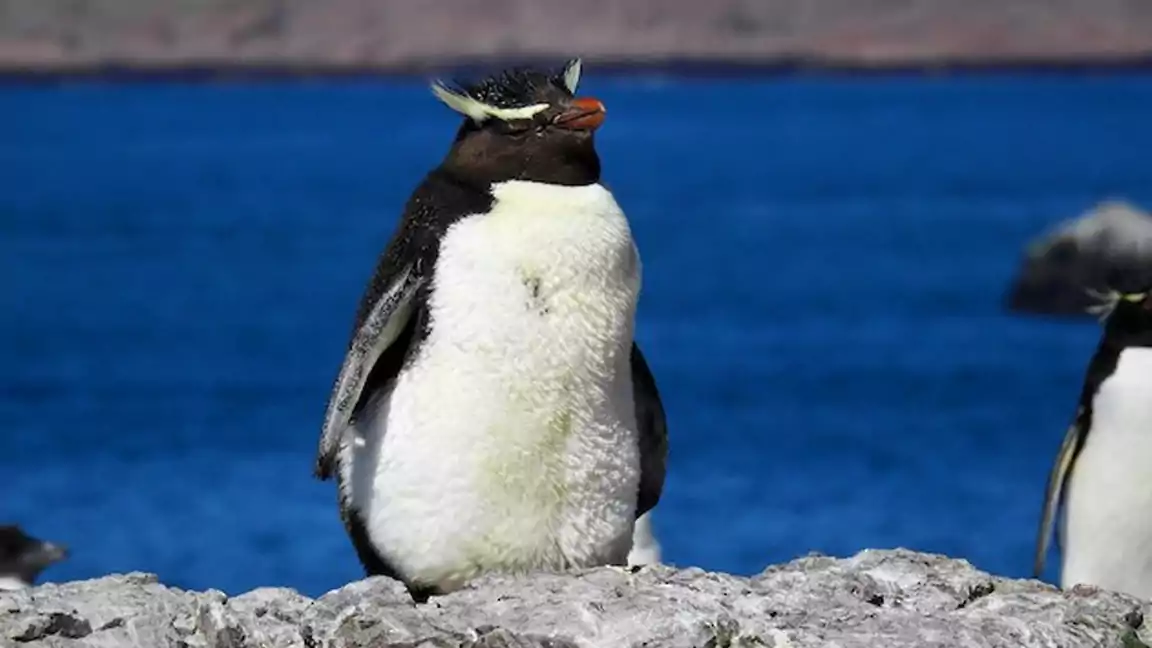
When compared to other penguin species, rockhopper penguins are among the tiniest. They top out at a maximum height of roughly 2 feet. They weigh only about 5.5 to 6.5 pounds, making them quite portable.
Rockhopper Penguins are an obnoxious and combative lot.
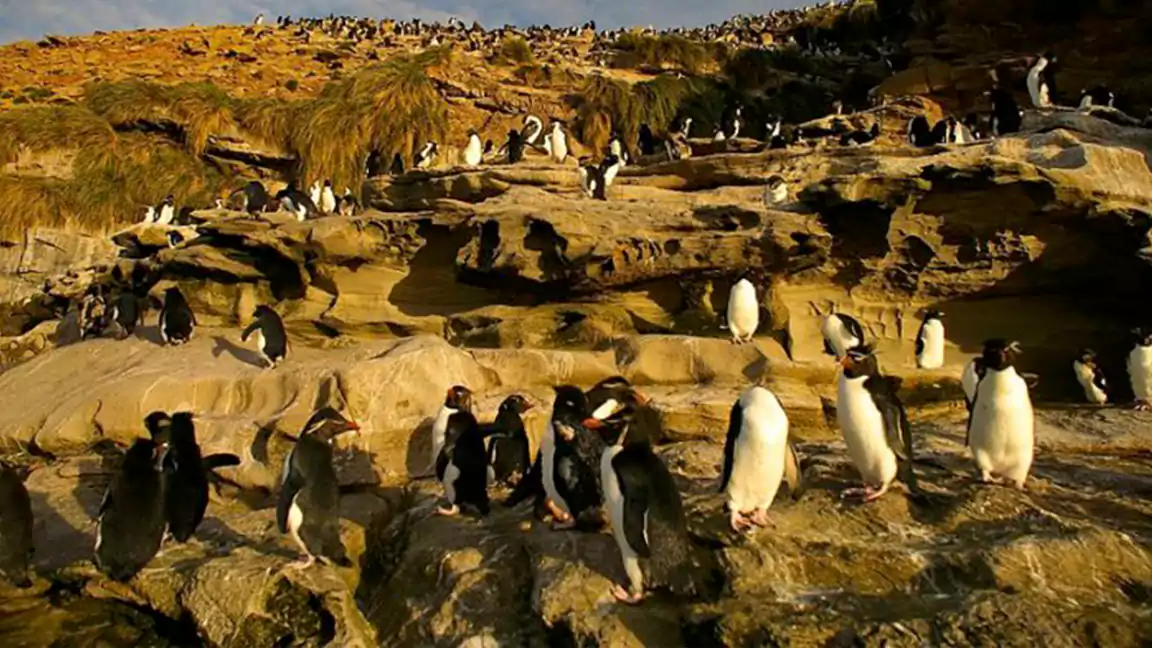
The northern rockhopper penguin is a tough little bird with a reputation for being a scrapper. These birds will get into fights over territory, mates, and food. When threatened, these penguins will often make loud calls to scare away potential danger. A special call lets them update their loved ones on their whereabouts. They are just trying to make it in a hostile world, and that can make them appear violent. However, rockhopper penguins also show a softer side, as evidenced by their demure head bowing and soft preening.
The Rockhopper penguin’s unique plumage and pattern of spots sets it apart.
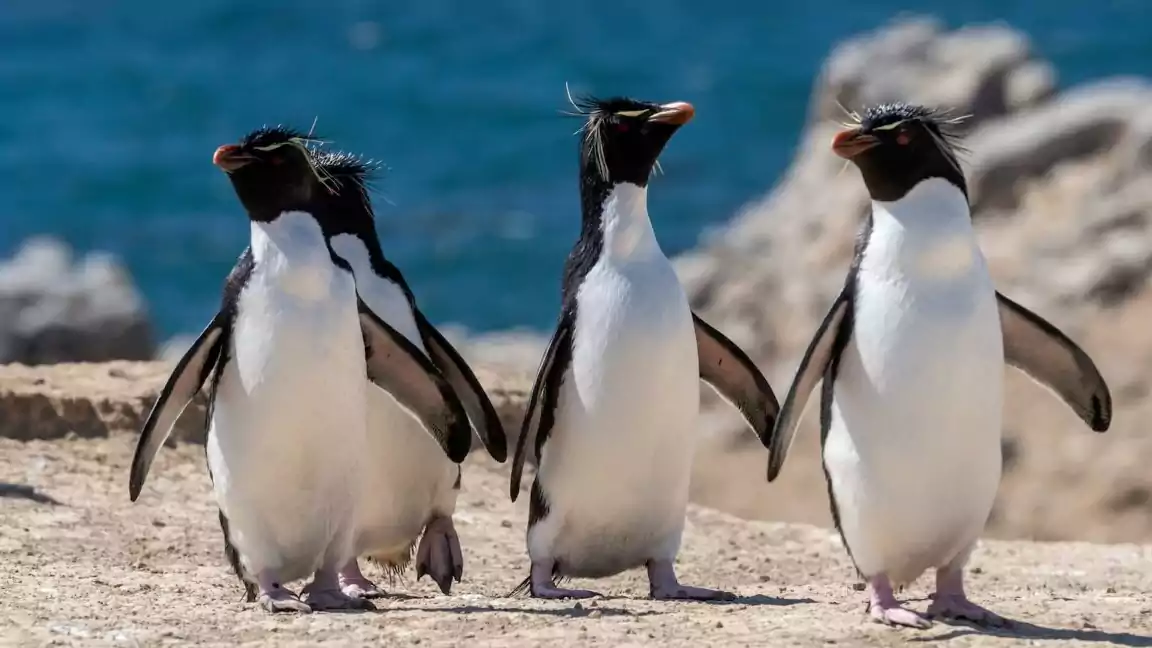
The rockhopper penguin may be little, but it packs a powerful punch. The yellow tufts of feathers on the crown of these small penguins remind one of enormous, drawn-out eyebrows, making them instantly recognizable. Each penguin has its own distinctive pattern of black and yellow feathers beneath those tufts. Red beaks are very noticeable on rockhopper penguins. Interestingly, their beaks start out black but gradually lighten as they become older. The ruby irises of these intriguing animals stand in stark contrast to their black eyelids and cheeks.
The Cold-Tolerant Rockhopper Penguin
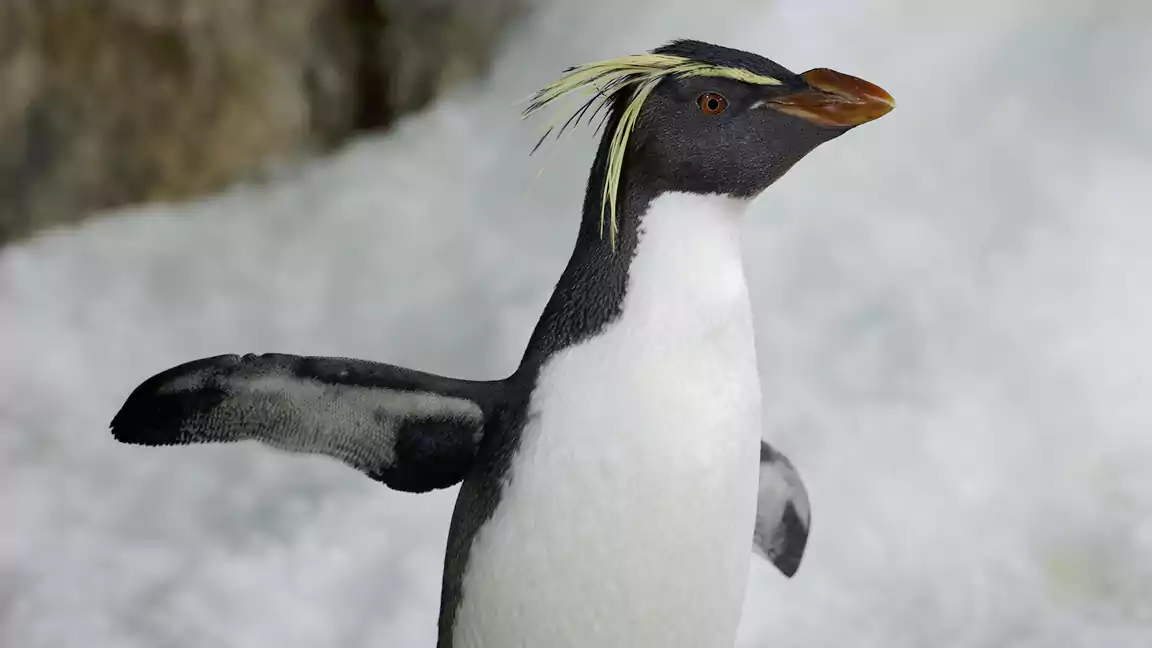
New Zealand, Chile, South Georgia, the Falkland Islands, and Antarctica are just few of the places on Earth where you can see rockhopper penguins in their natural habitat. They’re the ones you see popping up everywhere you look for penguins. Recent years have seen a precipitous drop in their numbers due to warming temperatures and increased predation. However, the rockhopper penguin is making a comeback because to extensive conservation efforts.
Their Eyes are Salt-Receiving Glandular
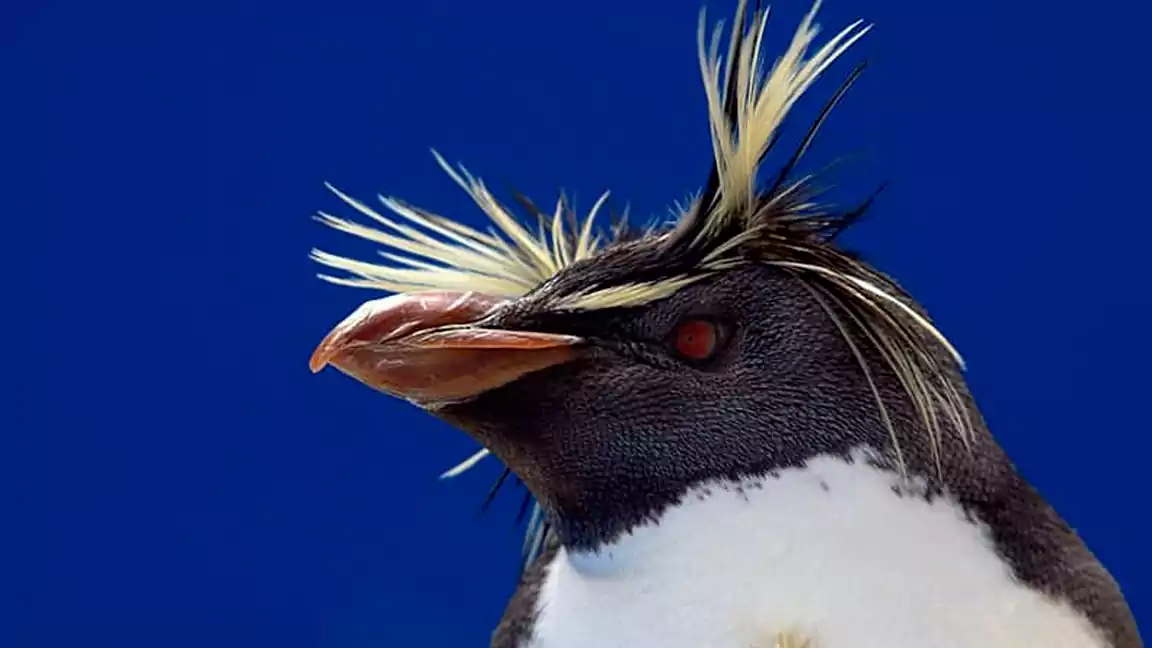
Did you know penguins have a natural defense against salt? That’s right! These marine birds get a lot of their daily sodium intake from the seafood they eat and the ocean water they bathe in. However, excessive salt can be harmful to cells, leading to their dehydration and eventual death. Penguins’ glands immediately above their eyes help them avoid this problem.
These glands secrete a fluid that the body uses to expel excess salt through the nasal passages. When the salt gets inside the nose, it has to go somewhere, and it usually comes out with a sneeze. Even for something as mundane as salt overload, nature has an incredible way of taking care of itself.
The diet of a Rockhopper Penguin varies greatly.
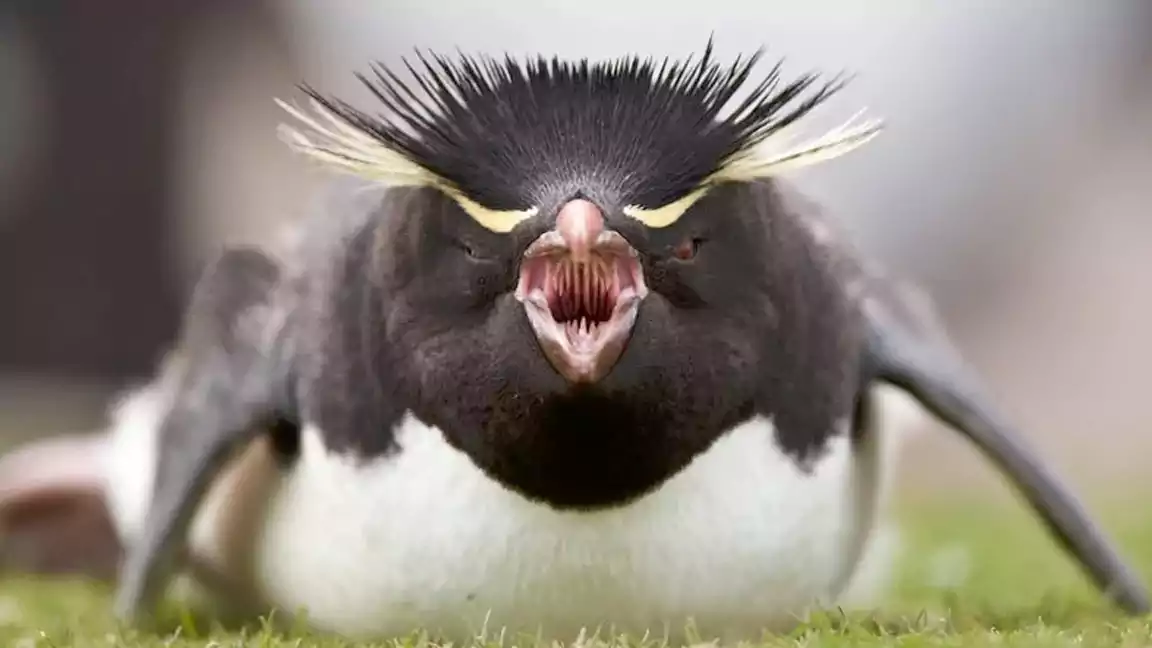
The penguin is one of the world’s most popular birds. They’re cute, hilarious, and full of whimsy. But what does rockhopper penguins eat in some really innovative ways. Food is one of these birds’ many passions. They consume krill, fish, squid, crabs, and whatever else they can get their mouths on. Sadly, rockhopper penguins will eat virtually anything they find in the ocean or that washes ashore, even trash, because they mistake it for food. The prospects of survival for these beautiful birds are slim if they accidentally find and ingest a piece of plastic floating in the ocean.
Unfortunately, because to human activities including oil spills, egg harvesting, and commercial fishing, these penguins are now considered to be in a vulnerable status. However, these incredible beings are not doomed yet. We can help ensure that penguins get the chance they deserve to survive and prosper for future generations by engaging the public and implementing conservation measures.
Rockhoppers form lifelong pairs and produce two offspring at a time.
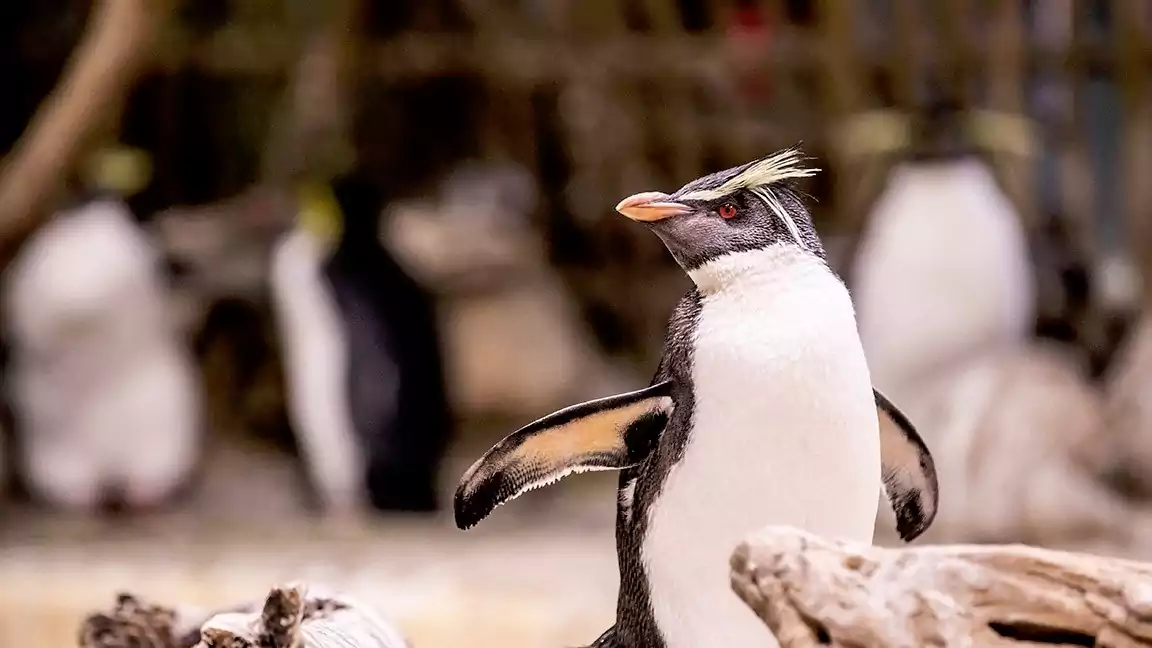
Soul mates must exist for rockhopper penguins, as they form lifelong partnerships. Until one of them dies, they will remain entirely loyal and devoted to one another. The parents of a rockhopper penguin chick are both the male and female of the species. The female lays two eggs at once, which she carefully balances on her feet while keeping warm with her own body.
After about 38 days, the chicks emerge from their eggs.
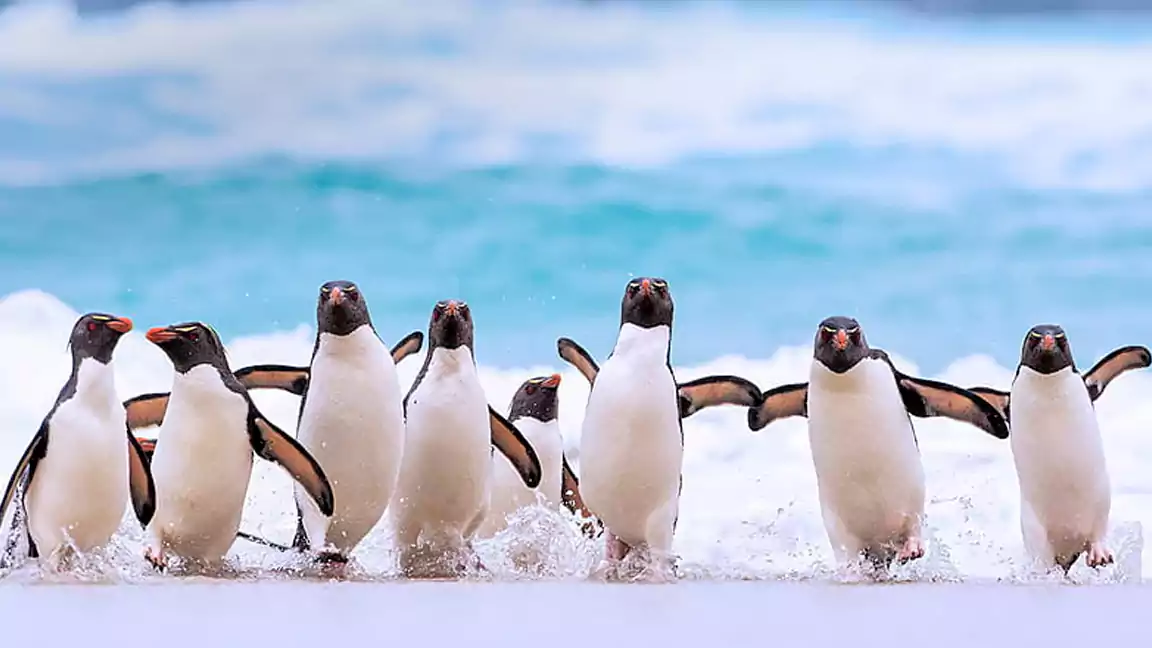
Chicks of the rockhopper penguin species typically hatch after 38 days and are fully independent after 70 days. Nonetheless, they tend to live with their parents until they are about two years old. Next, they’ll be ready to fly out. (leave the nest to disperse to breeding colonies of their own).
There are certain Dangers to Rockhopper Penguins
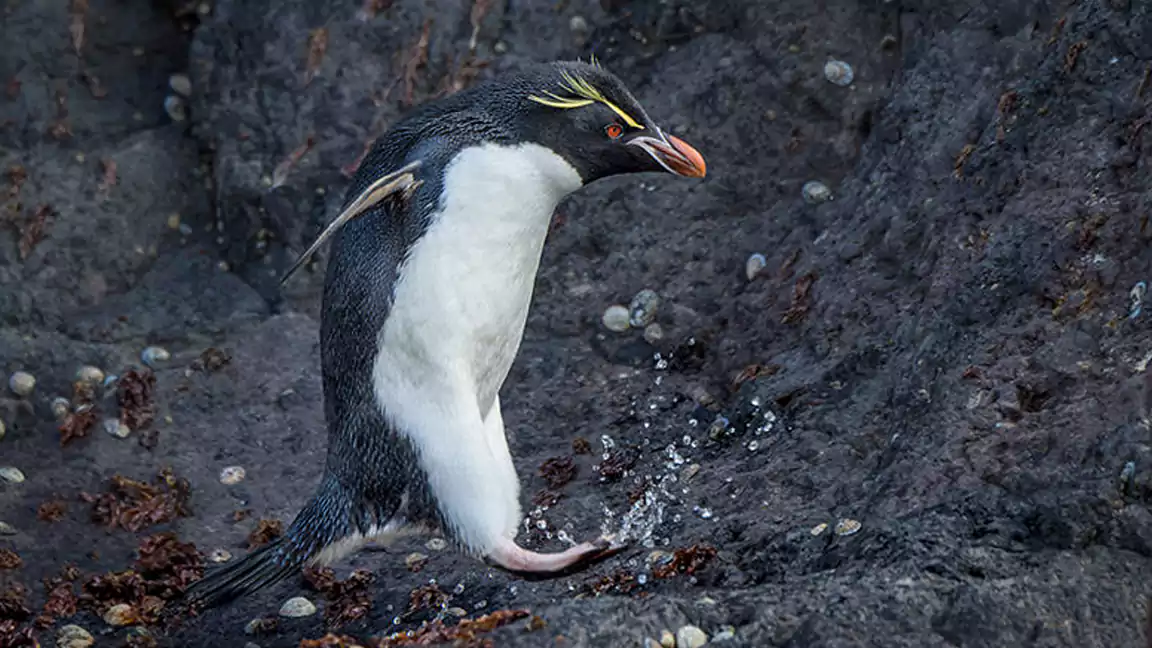
Leopard seals, orcas, and skuas are among the predators that rockhopper penguins face in the wild. However, because it prefers to dwell in isolated areas, it faces little danger from these predators. When threatened, rockhopper penguins may rely on their sharp beaks, lightning-fast reflexes, and strong social bonds to fend off predators. The ice floes on which these birds dwell and hunt are melting due to climate change, posing a threat in addition to natural predators. The water that rockhoppers rely on for sustenance is under risk from oil leaks.

